Learn Grading: The Parts of a Coin
Posted on 2/11/2020
Numismatics has a language of its own. For example, specialized terms help collectors and dealers refer to different parts of a coin. Mastering the language of numismatics will help you to communicate with your peers and get the most out of numismatics.
The most basic terms to describe the parts of a coin are obverse, reverse and edge. Other terms describe different design elements or specific locations on a coin. Here are some of the most common terms referring to parts of a coin:
Obverse: The front or “heads” side of a coin. (Sometimes abbreviated OBV when printed on the NGC certification label.) Note: The side facing forward in the NGC holder isn’t necessarily the obverse, because NGC usually puts the side with the most interest to collectors facing forward. For example, many commemorative coins of British Commonwealth nations feature Queen Elizabeth II on the obverse and a unique design on the reverse, so the reverse is encapsulated facing up.
Reverse: The back or “tails” of the coin. (Sometimes abbreviated REV when printed on the NGC certification label.)
 |
 |
| This NGC certification label contains both the terms obverse and reverse to describe a 2000 Sacagawea Dollar Muled with a Washington Quarter. Click images to enlarge. |
|
Edge: Running 360 degrees at the periphery of the coin is the edge, which is sometimes called the third side of a coin. Though it is often overlooked, expert numismatists know to examine it for variety identification and counterfeit detection. Edges can have different styles, with the two most common being plain edge (as on a Lincoln cent) and reeded edge (as on a Washington quarter). Others include lettered edge, numbered edge, starred edge and ornamental edge.
 |
 |
| This NGC certification label describes an important aspect of this Chinese coin: It is missing an number that would normally be visible on its edge.Click images to enlarge. | |
Reeding: These are raised, vertical protrusions on the edge of a coin which traditionally helped to make it obvious if someone had removed metal from the edge (such as filing the edge of gold coinage).
 |
Rim: This is the raised lip around the edge of the coin which is meant to protect the devices from being damaged or worn too quickly.
Denticles: These small, toothlike projections from the rim toward the center of a coin form a decorative border to the design.
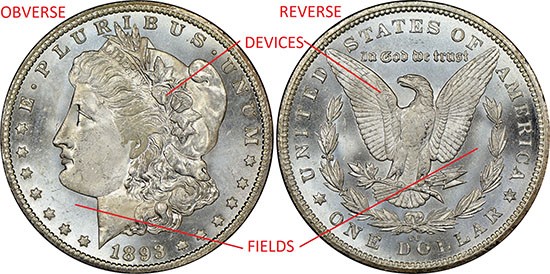 |
Fields: The flat surface area of a coin between the various devices.
Devices: The raised elements of the design, such as the portrait, lettering and date. Typically, these features are higher in relief than the fields of the coins, but some designs feature sunken relief, in which the design elements are set below the level of the field.
Legend: The inscription or lettering on a coin.
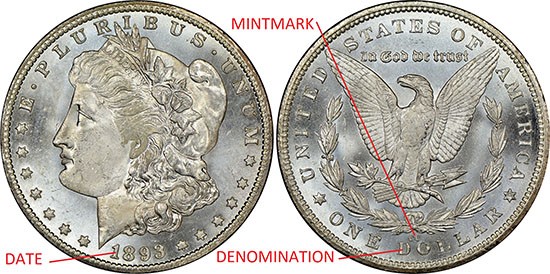 |
Date: The year of the coin’s issue, which generally is the same year it was struck.
Mintmark: This is a small letter or symbol on a coin that identifies the location where it was made. United States coinage is currently struck at four mint locations; Philadelphia (P or no mint mark), Denver (D), San Francisco (S), and West Point (W). Past mint locations include Carson City (CC), Charlotte (C), Dahlonega (D, 1838-61 only), and New Orleans (O). The mintmark follows the year on NGC certification labels.
Denomination: The “face value” of a coin. A coin’s actual value may significantly exceed its face value due to its precious metal composition, numismatic desirability or both.
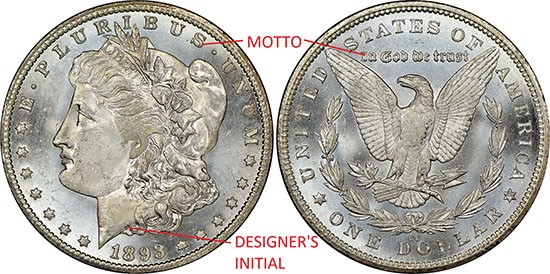 |
Motto: A repeated word or phrase that is found on all coins from a particular country. On US coins, “Liberty,” “In God We Trust” and “E PLURIBUS UNUM” would be considered mottoes.
Designer’s Initials: Designers of a coin are sometimes allowed to include their name or initials with the coin’s design. For example, on the Morgan dollar, George T. Morgan’s ‘M’ is located at the truncation of Liberty's neck and on the wreath bow.
 |
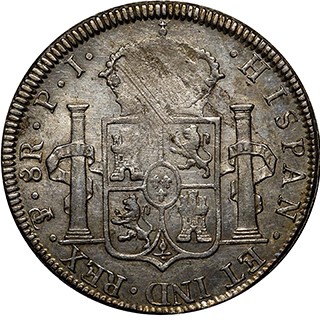 |
| Assayer’s marks can be seen on the reverses of this Mexico 1772 Escudo (MF, at 5 o’clock) and Bolivia 1815 8 Reales (P.J., at 10 o’clock) | |
Assayer's mark: Lettering on a coin that indicates its assayer, the person attesting that the coin is struck in the correct purity of a precious metal. It is most frequently seen on vintage coins of Latin America.
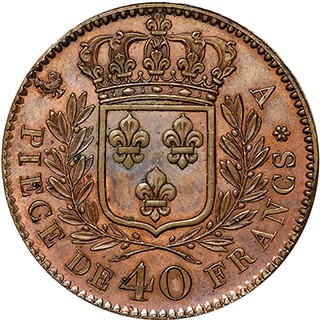 |
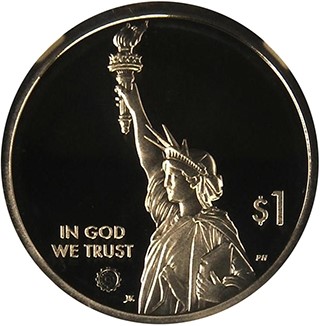 |
| Privy marks are seen on the reverse of an 1815 France 40 Francs Essai (a rooster at 10 o’clock) and the obverse of a coin from the US 2019 Innovation Dollar Proof Set (gear at 7 o’clock). | |
Privy mark: A small symbol added to the design of a coin. On vintage coins, this was done to help identify the designer or mint that made the coin, or to foil counterfeiters. In modern times, these are used on certain special issues to celebrate a particular event. For instance, the 2020-W quarters struck at the West Point Mint will have a ‘V75’ privy mark to commemorate the 75th anniversary of the Allied victory in World War II.
NGC maintains a glossary at NGCcoin.com/glossary for these and other terms commonly used in numismatics.
Related links
- Learn Grading: What Is a Mint Error? — Part 4
- Learn Grading: What Is a Mint Error? — Part 3
- Learn Grading: What Is a Mint Error? — Part 2
- Learn Grading: What Is a Mint Error? — Part 1
- Learn Grading: What Are the SP and PL Prefixes?
- Learn Grading: What is a Proof Coin?
- Learn Grading: What is an NGC Details Grade?
- Learn Grading: What Are the Plus and Star Designations?
- Learn Grading: What Are Full Bell Lines?
- Learn Grading: What Is the Full Head Designation?
- Learn Grading: What Are Full Bands and Full Torch?
- Learn Grading: What are 5FS and 6FS
- Learn Grading: What are BN, RB and RD?
- Learn Grading: Prooflike (PL) and Deep Prooflike (DPL)
- Learn Grading: Proof, Proof Cameo and Proof Ultra Cameo
Stay Informed
Want news like this delivered to your inbox once a month? Subscribe to the free NGC eNewsletter today!
Add Coin
Join NGC for free to add coins, track your collection and participate in the NGC Registry. Learn more >
